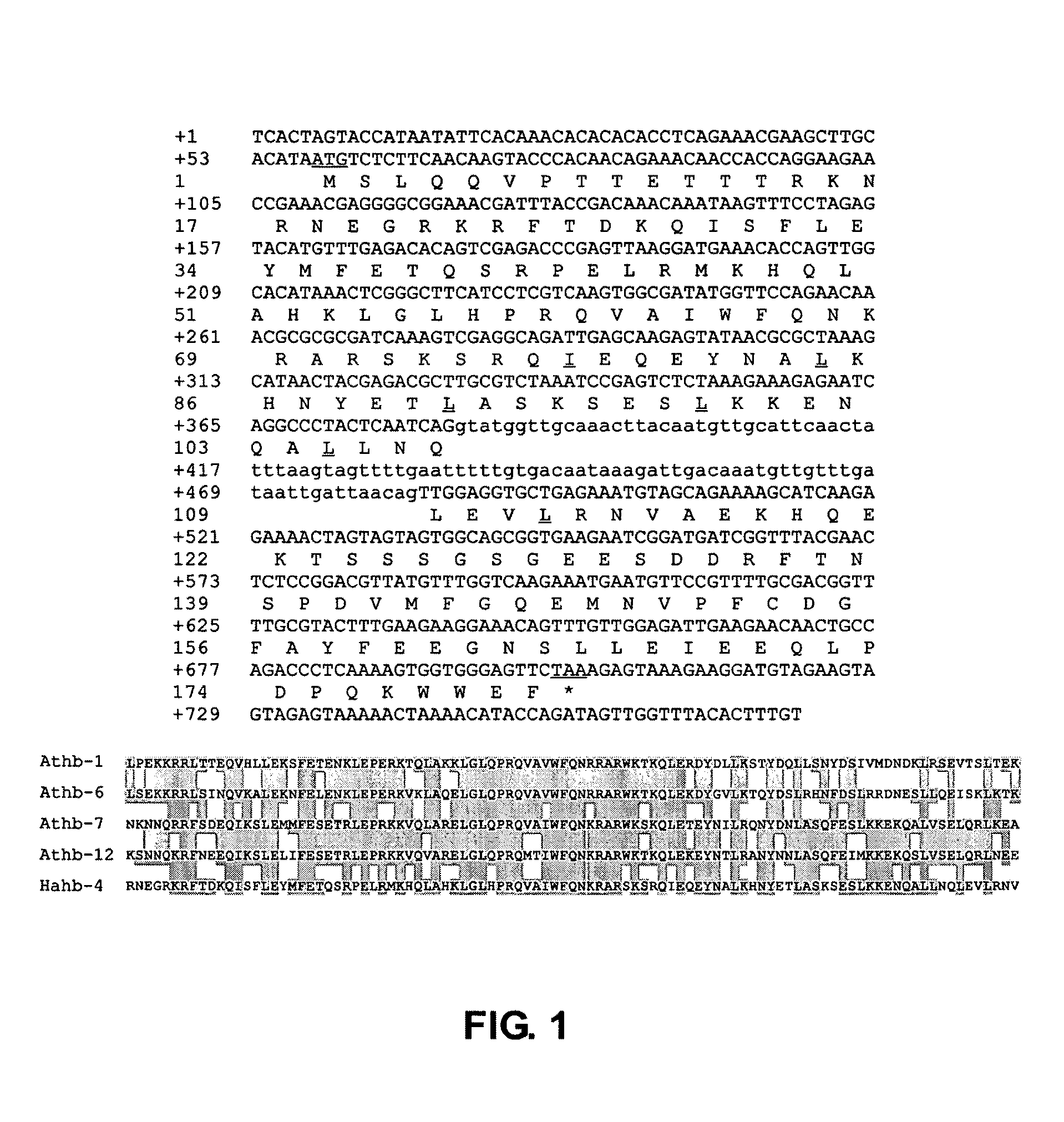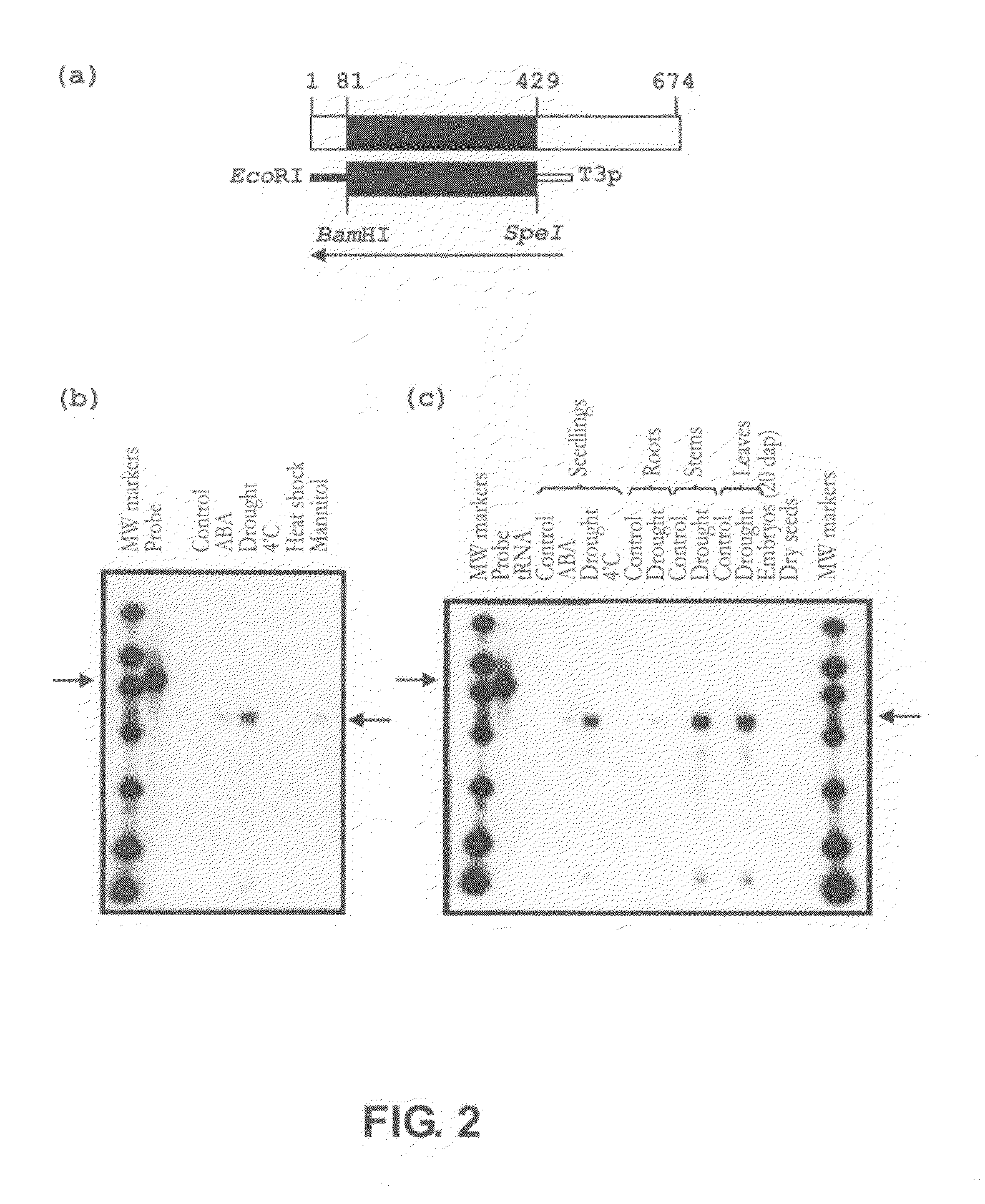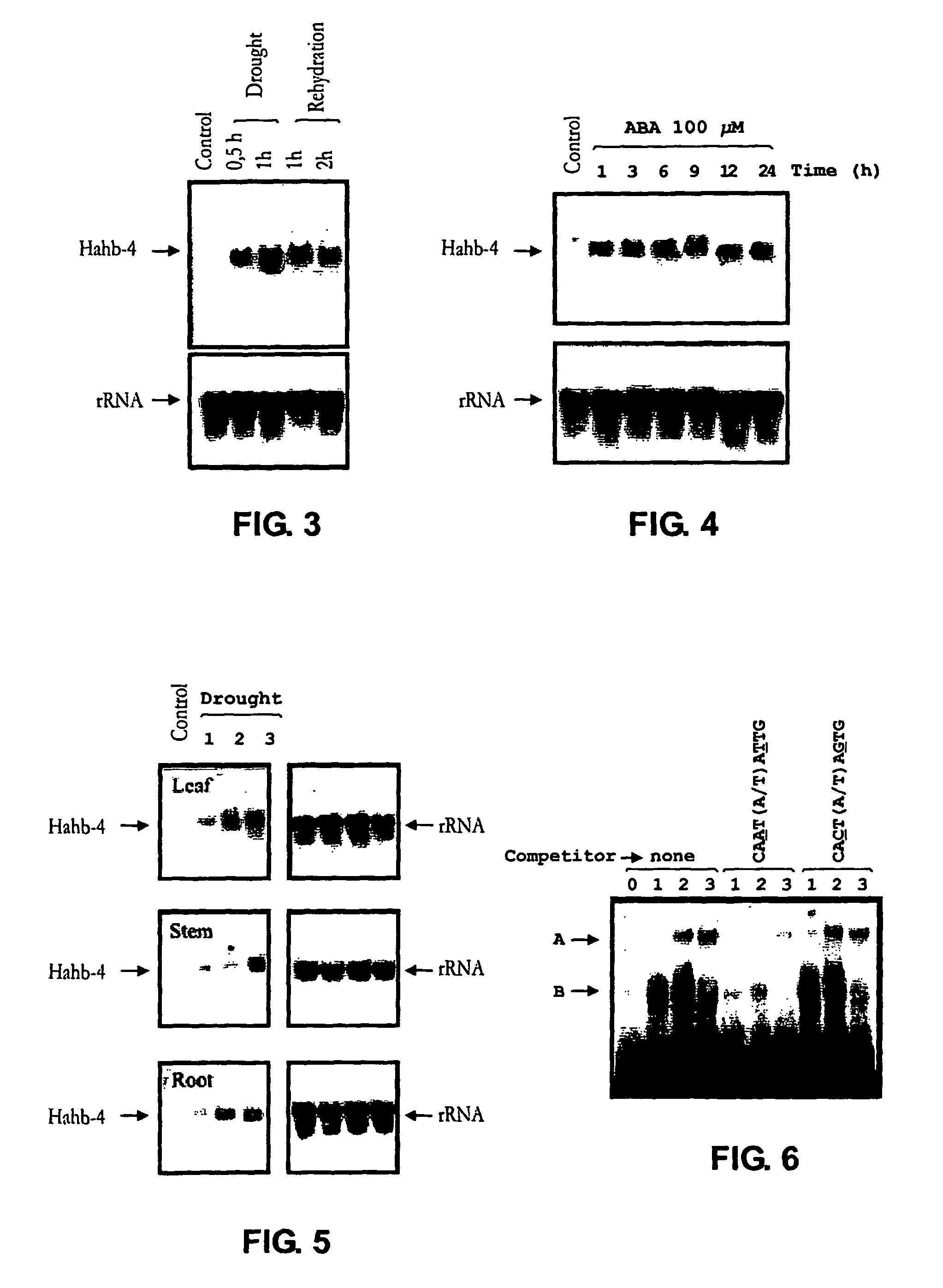Transcription factor gene induced by water deficit conditions and abscisic acid from Helianthus annuus, promoter and transgenic plants
a transcription factor and water deficit technology, applied in the field of transcription factor gene induced by water deficit conditions and abscisic acid from helianthus annuus, promoter and transgenic plants, can solve the problem of rare tolerance in vegetative plants
- Summary
- Abstract
- Description
- Claims
- Application Information
AI Technical Summary
Benefits of technology
Problems solved by technology
Method used
Image
Examples
example 1
Isolation and Characterization of the New Sunflower Gene Hahb-4, that is a Gene Encoding a Protein Belonging to the Hd-Zip I Family
[0126]A. Hahb-4 Gene cDNA Isolation:
[0127]For the isolation of partial cDNA clones containing homeobox sequences, a polymerase chain reaction (PCR)-based strategy was carried out as previously described (González and Chan, Trends in Genetics 9:231-232, 1993, herein incorporated as reference) on total DNA from a sunflower stem cDNA library constructed in lambda gt10. Sequences representing the 3′end of the Hahb-4 transcript were obtained by PCR using lambda gt10 sequencing primers and the specific primer H41 (5′-GGCGGATCCAACAGAAACAACCACCAGG-3′ (SEQ ID No 11)), that matches nucleotides 81-100 of the cDNA sequence (SEQ ID No 2 and FIG. 1). The 5′-end of the transcript was obtained applying rapid amplification of cDNA ends (RACE) to polyA+RNA obtained from water-stressed sunflower stems using the specific oligonucleotide IPCR0 5′-GGCGGATCCCCTGGTGGTTGTTTCTGTT...
example 2
Tests Showing that Hahb-4 is Induced by Lack of Water
[0132]A. Plant Material, Growth Conditions and Water Stress Treatments
[0133]Helianthus annuus L. (sunflower cv. contiflor 15, from Zeneca, Balcarce, Argentina, or cv. Sunweed, from Rhône-Poulenc, Lyon, France) seeds were surface sterilized and grown on filter paper inside Petri dishes for a period of 4 d. Seedlings were then transferred to plastic supports containing Hoagland's medium and grown until they had six leaves (approximately 3 weeks). Water stress was imposed either by transferring 4-day-old-seedlings to Petri dishes with dry filter paper or by removing plants from the hydroponic culture. The treatment times were as indicated in the figures.
[0134]B. RNAse Protection Analysis:
[0135]For RNAse protection analysis, total RNA (15 μg) prepared as described (Almoguera C., et. al.; Plant molecular Biology 19: 781-792, 1992) was hybridized to a specific Hahb-4 riboprobe synthesized by in vitro transcription using T3 RNA polymeras...
example 3
Test for Providing Tolerance to the Water Stress in Arabidopsis thaliana Employing the Sunflower Hahb-4 of the Invention
[0143]A. Biologic Material:
[0144]E. coli DH5α strain and Agrobacterium tumefaciens GV2260 strain were employed. For the transforming plants tests seeds of Arabidopsis thaliana ecotype Columbia-0 were used.
[0145]B. Molecular Cloning:
[0146]For cloning Hahb-4 under the control of CaMV35S promoter a PCR reaction was carried out by using [as template] the clone corresponding to cDNA (Gago et al., Plant Cell & Environment 25: 633-640, 2002, herein incorporated as a reference) and two specific oligonucleotides T1: 5′-GCGGGATCCACCATGTCTCTTCAACAAGTA-3′; (SEQ ID No 20) and T2: 5′-GCCGAGCTCTTAGAACTCCCAACCACCTTTTG-31 (SEQ ID No 21) that hybridized in both ends of the coding region. In this manner regions 3′ and 5′ that do not encode the messenger ARN are eliminated thus decreasing the possible effects of post-transcriptional regulation. These oligonucleotides were designed in ...
PUM
| Property | Measurement | Unit |
|---|---|---|
| pH | aaaaa | aaaaa |
| pH | aaaaa | aaaaa |
| temperature | aaaaa | aaaaa |
Abstract
Description
Claims
Application Information
 Login to View More
Login to View More - R&D
- Intellectual Property
- Life Sciences
- Materials
- Tech Scout
- Unparalleled Data Quality
- Higher Quality Content
- 60% Fewer Hallucinations
Browse by: Latest US Patents, China's latest patents, Technical Efficacy Thesaurus, Application Domain, Technology Topic, Popular Technical Reports.
© 2025 PatSnap. All rights reserved.Legal|Privacy policy|Modern Slavery Act Transparency Statement|Sitemap|About US| Contact US: help@patsnap.com



